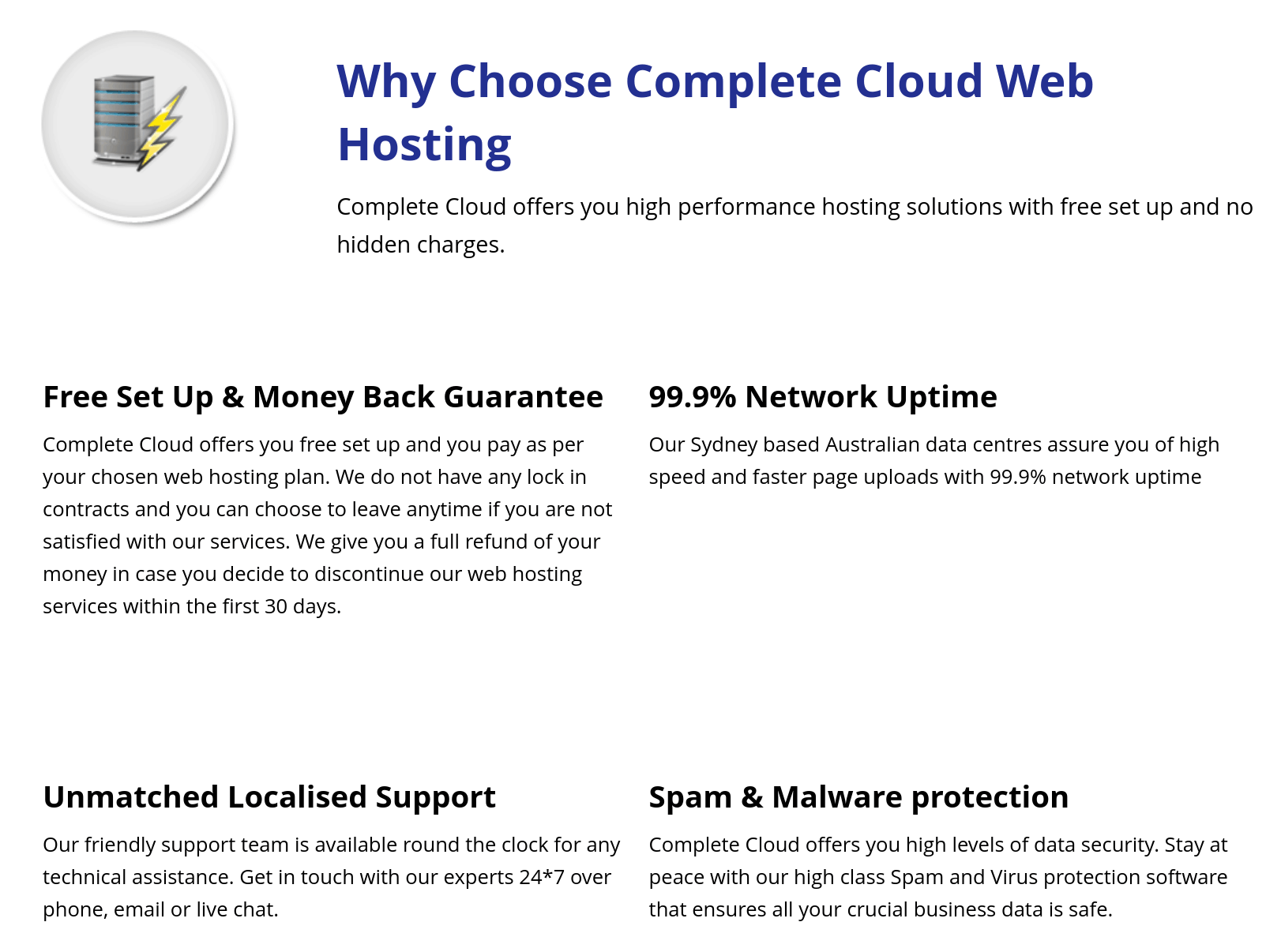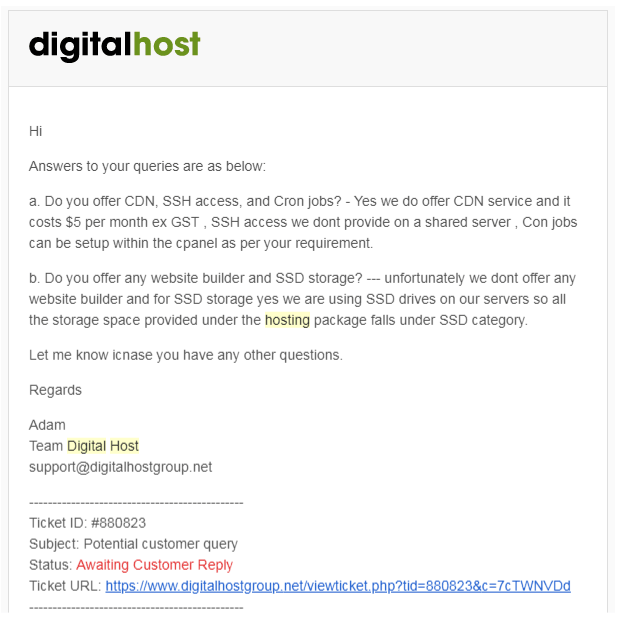Based in New South Wales, Australia, Complete Cloud has recently been taken over by specialist web hosting company Digital Host Group (DHG).
According to its Facebook page, Complete Cloud was founded in 2012, since when it has helped its clients expand their online presences while reducing expense. Apart from its shared web hosting services, the company offers virtual private hosting, dedicated hosting, custom hosting packages, and domain-related services. Its website supports English.
Features and Ease of Use

Complete Cloud offers four kinds of shared hosting that feature:
- 99.9% uptime
- cPanel
- SSD storage space (2 GB to 20 GB)
- Data transfer (10 GB to 100 GB)
- Unlimited POP & IMAP
- Spam filter
- Cron jobs
- Unlimited MySQL databases
- 24/7 site monitoring
- Daily remote backups
- FTP access
- Premium DNS
Besides shared hosting, Complete Cloud also offers four VPS solutions, four dedicated server solutions, and domain solutions. The VPS and dedicated servers can be tailored to suit the different needs of different clients. The scalable virtual servers let you conveniently scale up or down.
Pricing and Support

Complete Cloud’s shared hosting plans are expensive if you choose the monthly option. You’ll get the lower advertised prices if you sign up for a two-year term and even lower prices if you take a triennial term. To complete your purchase, you’ll be redirected to the shopping cart of the new parent company, Digital Host. There are no contract lock-ins, and the 30-day money-back guarantee gives you a month to get a refund if you’re not happy with your hosting.
According to its website, you can contact Complete Cloud’s 24/7 customer support team via telephone, fax, email, online contact form, or live chat. I couldn’t access the live chat when I wanted to try it, but (eventually) I received a response to my exploratory email.
If you prefer to support yourself, you might be a bit disappointed as there isn’t a comprehensive knowledge base available. While there are some FAQs and articles, there is no dedicated knowledge base, and the blog hasn’t seen any updates since 2014.










